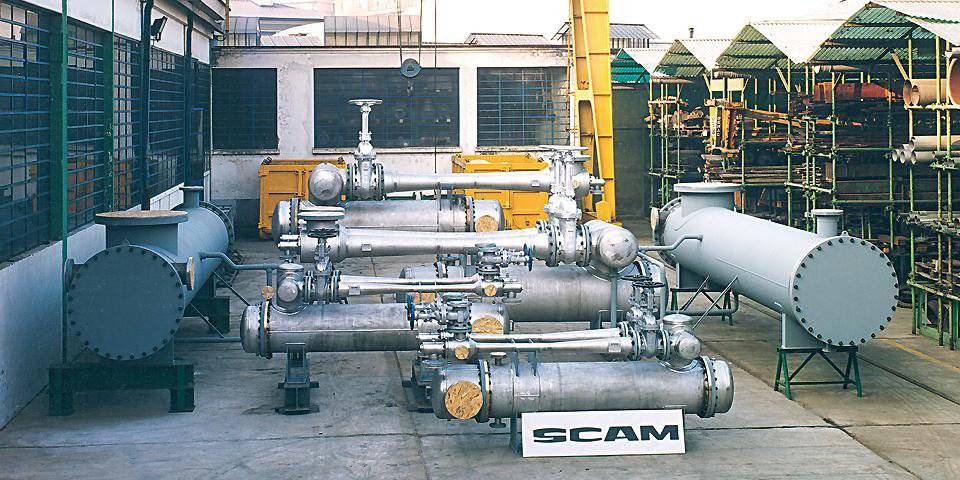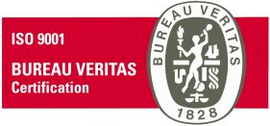Ejectors
Since 1930 SCAM has been designing and manufacturing more than 17,000 ejectors of different types for various applications, counting among its Customers the most important Italian and foreign industries. SCAM ejectors may be of single or multi-stage types with intermediate and final surface or mixture condensers.
The most frequent applications are in energy and manufacturing industries. Furthermore, countless chemical and petrochemical plants adopt ejectors for keeping the vacuum necessary for processing fractional distillation, crystallization, drying, deaeration, filtration and impregnation. Particularly, all the plants for deodorization and fatty acid treatment built lately are fitted with steam jet thermocompressor ejectors which allow very low final residual pressures.
Multistage ejectors with condensers
SCAM MULTI-STAGE EJECTORS with condensers may be of two or multistage type. Condensers placed between one stage and the other are meant to condensate the steam coming from the previous stage in order to reduce the quantity of intaken fluid and, therefore, the motive steam consumption of the following stage. The number of stages (max. 5-6) is stated according to the required operating performances.

Slide title
Write your caption hereButton
Applications
There are many diversified applications of SCAM ejectors; the original one, which is the extraction of incondensable substances from the steam condensers, was followed by many others, mainly in the chemical and petrochemical fields, thanks to the easy operation and maintenance of these equipment. One of the most interesting fields of application of SCAM ejectors is the vacuum cooling branch: water or an aqueous solution brought to a suitable temperature under vacuum, literally cools itself as the result of evaporation.
In processes involving the use of ejectors in the more specific pharmaceutical and foodstuff fields include lyophilisation, vacuum packaging, fruit juice concentration as well as sugar and syrup production processes. In most cases, the intaken fluid consists almost entirely of steam and the term "thermocompression" is widely employed to define the ejector performance; actually, the intaken steam undergoes to a real compression at the expenses of the motive steam.
An interesting application of thermocompression occurs in compression-type sea water desalting units, where the "booster ejector" can suitably replace the mechanical compressor. The use of steam jet ejectors for the discharge of the incondensible substances present in steam condensers is well known; a similar function is entrusted to SCAM ejectors running in sea water desalting units for distillation purposes. Similarly, technologies have been developed for the vacuum cooling of solids which originally contain humidity or which can be sprayed with water before the cooling phase. For instance, we can mention the cooling processes of fresh vegetables and of small size fruits.
On this subject, it is important to underline the adoption of ejectors for "flash effect" cooling (instant vacuum evaporation) of some corrosive liquids and some solutions where the solute is precipitated in consequence of the cooling action; in such cases, the use of conventional heat exchangers would be expensive and hardly practicable.
To conclude this outline of possible applications, it is important to mention two recent uses: the maintenance of vacuum in test rooms for the simulation of flights at high altitudes - as well as in the space - and the degassing of moulded steel during casting operations in steel mills. In these cases, the residual pressures on suction are lower than 1 mbar and the quantities of intaken fluid are considerable. This involves the setting up of huge plants with suction ducts having a diameter up to 3 m.s.








